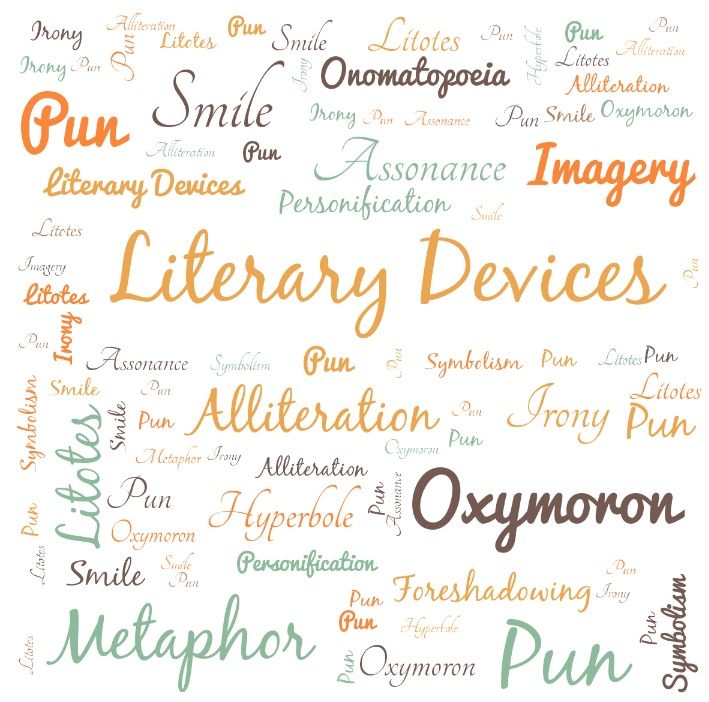Literary Devices
Feb 25, 2019 • 653 views
When a poet writes about anything whether it me emotions or feelings, he simply doesn’t put words according to rhyme scheme & refined words, they add a lot of elements, a few are listed as follows:

1)Alliteration: is the repetition of a sound in a series of words or phrases. It refers to the repletion of a consonant in any syllables that are stressed.
Some examples are:
·But now I am cabined, cribbed, confused, bound into saucy doubts & fears. – Shakespeare.
·When I was one-and-twenty – A.E. Housman (Note that ‘one’ has a ‘w’ sound.)
·Peter piper picker a peck of pickled peppers.
2)Assonance: refers to the repetition of sounds produced by vowels within a sentence or phrase. In a way, it can be understood to be a kind of alliteration. But what sets it apart from alliteration is that it is the repetition of only vowel sounds, preceded & followed by different consonant sounds.
Examples:
·There are no tricks in plain and simple faith. – Shakespeare.
·John met his fate by the lake.
·But I am pigeon- livered, and lack gall to make oppression bitter.
3)Hyperbole: refers to the exaggeration of an obvious statement or truth. This is primarily used to make sentence sound extravagant & lay emphasis on something unimportant. Hyperbole is used extensively in dramatic poetry.
Examples:
·He doth bestride the narrow world like a Colossus, and we petty man walk under his his…huge legs. – William Shakespeare.
4)Irony: is the figure of speech in which actual meaning of word or statement is opposite of what it ought to be. It could be described as a play of words & is used in literature to convey or imply a meaning other than the literal one. There are four types of irony – verbal, situational, dramatic & rhetorical.
Examples from The Rime of the Ancient Mariner by Coleridge:
·Water, water, everywhere,
And on the boards did shrink;
Water, water, everywhere,
Nor any drop to drink.
5)Metaphor: is a figure of speech in which a word or phrase is applied to a person, idea, or object to which it is not literally applicable. It is only an implied comparison which imaginatively identifies one thing with another. This device is used by an author to turn or twist the meaning of a word. Metaphors are most often used figure of speech
Example from The Toaster by William Jay Smith
·A silver-scaled Dragon with jaws flaming red
Sits at my elbow and toasts my bread.
I hand him fat slices, and then, one by one,
He hands them back when he sees they are done.
6)Onomatopoeia: is a figure of speech in which words resembles the sound the object the poet or author is talking about.
Examples: The Bells by Edgar Allan Poe
·Hear the sledges with bells-
S’ilver bells!
What a world of merriment their melody foretells!
How they tinkle, tinkle, tinkle,
In the icy air of night!
7)Oxymoron: is the art of combining two completely opposite words to reveal a truth about someone or something.
Examples:
·Parting is such sweet sorrow. – Shakespeare.
·Working in a coal mine is living death.
·The hurricane turned the lush island into hellish paradise.
8)Pun: is a medium of playing with words so that that they present various meanings simultaneously.
Examples:
·Grave men, near death, who see with blinding sight
--Dylan Thomas, Don’t go gentle into that good night.
